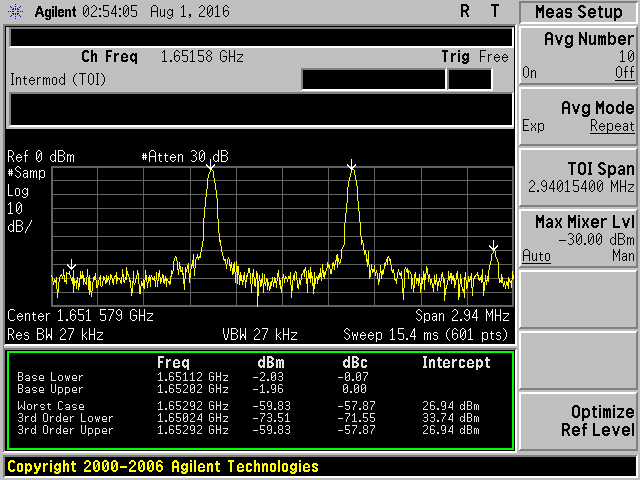Other Parts Discussed in Thread: TRF3722, TRF3722EVM
Hi,
I am using TRF372017 as a I/Q modulator to operate at 1.65GHz, According to datasheet, the OIP3 can be 25dBm at L band, and P1dB is about 11dBm.
But when I tested the OIP3 with two tone (150KHz space) on EVM board, and I can not get 25dBm OIP3, only around 20dBm at 0dBm output on our EVM board .
I do not know if the RF output of TRF372017 was matched to 50 ohm cross a wide band. and there is no impedance information on datasheet. on the EVM board, there is only a 22pF capacitor at the RF output.
As to OIP3, normally the output matching will affect OIP3 very much, Could you please tell the optimized matching impedance for OIP3 at 1.65GHz?
And are there any configuration setting in the chip to optimise OIP3?
Thank you very much!
Jerry Chen


